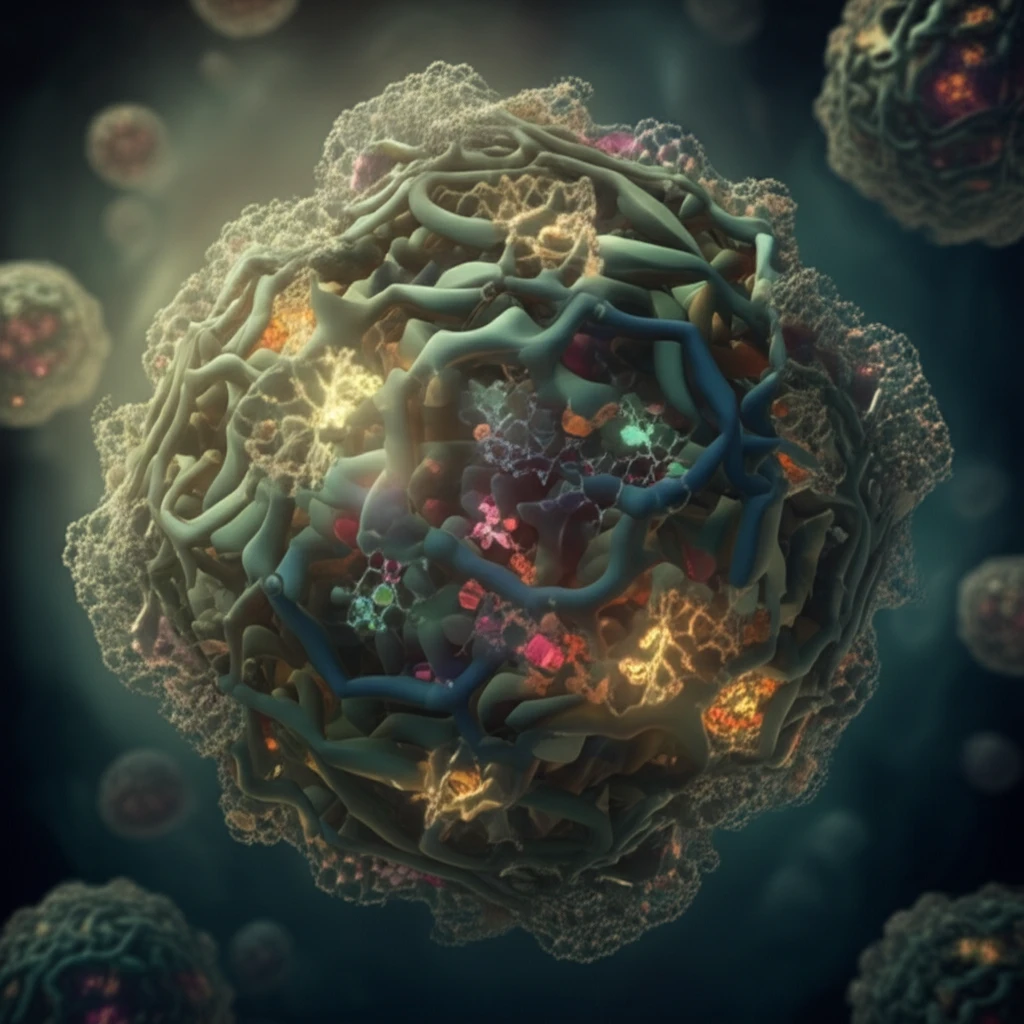
Unlocking the Secrets of Protein Folding: How a Cellular 'Cage' Could Revolutionize Drug Discovery
"Scientists have discovered a unique protein cage that acts as a nanoreactor, offering new insights into enzyme function and potential therapeutic applications."
Proteins are the workhorses of our cells, responsible for countless biological processes. But for a protein to do its job, it must fold into a precise three-dimensional shape. This folding process, while seemingly simple, is often complex and prone to errors. When proteins misfold, they can clump together and cause diseases like Alzheimer's and Parkinson's.
Now, researchers have uncovered a fascinating example of how nature controls this folding process within a tiny, self-contained 'cage.' This cage, formed by a protein complex, acts as a nanoreactor, orchestrating a series of chemical reactions with remarkable precision. The discovery offers valuable insights into enzyme function and could pave the way for new drug development strategies.
The study, published in Nature Chemical Biology, focuses on a protein cage involved in carbon fixation – the process by which organisms convert carbon dioxide into organic compounds. By understanding how this cage works, scientists hope to design artificial systems that mimic its efficiency.
The Intricate Design of a Nano-Sized Reactor

The protein cage is formed by conjoining catalytic domains, effectively creating a small nanoreactor for sequential reactions in a carbon-fixation pathway. Each domain contains an independent active site that faces the interior compartment, according to a crystal structure. This arrangement ensures that the reactions occur in a controlled and efficient manner.
- Spatial Organization: The cage brings multiple enzymes together in close proximity, increasing the speed and efficiency of the reaction.
- Substrate Channeling: The cage can channel substrates directly from one active site to the next, minimizing the loss of intermediates.
- Protection: The cage can shield reactive intermediates from the surrounding environment, preventing unwanted side reactions.
The Future of Enzyme Engineering: Learning from Nature's Designs
The discovery of this protein cage highlights the power of nature's designs. By studying these intricate molecular machines, scientists can gain valuable insights into the principles of enzyme catalysis and develop new technologies for various applications. The nanoreactor may even lead to new approaches in drug discovery. Researchers are working on new ways of using a protein cage’s architecture to guide the creation of novel catalytic compounds.
